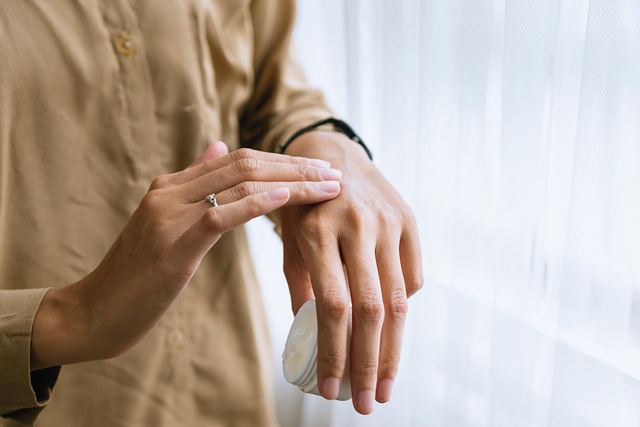London Tag Removal specialists explain that skin tags are common, soft growths caused by friction or trauma, often appearing in sensitive areas like underarms and genital regions. While usually harmless, many seek removal for aesthetic or comfort reasons. Professional treatments using methods like cryotherapy, surgical excision, or laser therapy ensure safe, effective London Tag Removal with minimal discomfort. Aftercare tips include keeping the treated area clean, dry, moisturized, and avoiding strenuous activities to minimize scarring and achieve long-term results.
Looking to address skin tags in sensitive areas? This comprehensive guide explores everything you need to know about London tag removal. We delve into the causes of skin tags forming on delicate body parts and highlight why accessible, safe removal methods are crucial. From common techniques to essential aftercare tips, learn how to achieve effective, long-term results without compromising your health or comfort.
- Understanding Skin Tags and Their Formation in Sensitive Areas
- Why London Tag Removal Should Be Approachable and Safe
- Common Methods for Removing Skin Tags on Sensitive Parts of the Body
- Aftercare and Prevention Tips for Effective Long-Term Results
Understanding Skin Tags and Their Formation in Sensitive Areas
Skin tags, also known as acrochordons, are small, soft skin growths that typically appear in areas where skin rubs against itself, such as the neck, armpits, groin, and ankles—including sensitive areas like underarms and genital regions. In London Tag Removal, understanding their formation is key to effective treatment. These tags form due to friction and trauma on the skin, leading to an overgrowth of cells in that area. They can vary greatly in size, from tiny dots to larger chunks, and often remain harmless, but many individuals prefer to remove them for aesthetic or comfort reasons.
Sensitive areas require a particular approach during skin tag removal to prevent irritation and potential complications. Professional treatments are available, offering safe and effective solutions tailored to these regions. Consulting with a qualified specialist ensures that the removal process is gentle and minimises any discomfort, providing relief from embarrassment or self-consciousness associated with skin tags in intimate areas.
Why London Tag Removal Should Be Approachable and Safe
London tag removal should be a straightforward and safe process, especially for sensitive areas. With the right expertise and techniques, it’s crucial that this procedure is approachable and accessible to all who need it. Many people may feel self-conscious or anxious about visible skin tags, particularly in intimate or highly visible regions. Therefore, ensuring London tag removal services are both effective and secure is paramount.
Choosing a reputable and licensed clinic with experienced professionals can make all the difference. Modern methods like laser treatments or surgical excision offer minimally invasive options, reducing discomfort and recovery time. These approaches prioritize patient safety and comfort, making London tag removal an achievable solution for those seeking to address their skin concerns discreetly and effectively.
Common Methods for Removing Skin Tags on Sensitive Parts of the Body
When it comes to removing skin tags from sensitive areas, there are several common methods available in London Tag Removal clinics. One popular approach is cryotherapy, where a liquid nitrogen probe is used to freeze and destroy the skin tag. This method is relatively quick and often effective, but it may cause temporary redness or itching afterwards.
Another option is surgical excision, which involves a doctor cutting out the skin tag with a scalpel or scissors. This technique is particularly useful for larger or more persistent tags. However, it carries a higher risk of scarring compared to cryotherapy. Laser treatments are also gaining popularity as a non-surgical option, targeting the blood vessels that feed the skin tag and causing it to fall off without leaving significant scars.
Aftercare and Prevention Tips for Effective Long-Term Results
After skin tag removal, especially in sensitive areas like the groin or underarms, proper aftercare is vital for achieving long-term results and minimizing scarring. Here are some key tips to consider: Firstly, keep the treated area clean by gently washing it with warm water and a mild soap. Avoid using harsh products that could irritate the skin. Pat the area dry thoroughly without rubbing, ensuring no moisture remains to prevent infection.
To aid healing and prevent new tags from forming, apply a thin layer of unscented moisturiser or petroleum jelly daily for at least two weeks post-treatment. This helps maintain skin hydration and supports tissue repair. Additionally, avoid strenuous activities or wearing tight clothing over the treated area until it has completely healed to reduce friction and potential damage. For London tag removal procedures, consulting a professional dermatologist is advisable for personalized advice tailored to your specific needs and sensitive areas.
When considering skin tag removal for sensitive areas, it’s crucial to opt for a safe and approachable method like London Tag Removal. By understanding the formation of these tags and employing effective aftercare practices, you can achieve long-term results without compromising your skin’s health. Remember, each individual’s experience is unique, so choosing a reputable professional for guidance is essential. With proper care, you can bid farewell to unsightly skin tags and restore your confidence.
